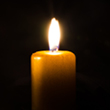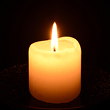JASCHA HEIFETZwas born of Jewish descent on 2nd February 1901, in Vilnius, Lithuania, then part of the Russian Empire.There is controversy over his birth year, which is sometimes placed a year or two earlier to 1899 or 1900.It is possible that his mother said he was two years younger to make him seem like more of a prodigy.His father, Reuven Heifetz, was a local violin teacher and served as the concertmaster of the Vilnius Theatre Orchestra for one season before the theatre closed down.Jascha took up the violin when he was three years old and his father was his first teacher.At five he started lessons with Ilya D. Malkin, a former pupil of Leopold Auer.He was a child prodigy, making his public debut at seven, in Kovno (now Kaunus, Lithuania) playing the Violin Concerto in E minor by Felix Mendelssohn.In 1910 he entered the Saint Petersburg Conservatoire to study under Leopold Auer himself.He played in Germany and Scandinavia, and met Fritz Kreisler for the first time in a Berlin private house together with other noted violinists in attendance.Kreisler, after accompanying the 12-year-old Heifetz at the piano in a performance of the Mendelssohn concerto, said to all present, "We may as well break our fiddles across our knees."Heifetz visited much of Europe while still in his teens.In April 1911, Heifetz performed in an outdoor concert in St. Petersburg before 25,000 spectators; there was such a sensational reaction that police officers needed to protect the young violinist after the concert.In 1914, Heifetz performed with the Berlin Philharmonic Orchestra conducted by Arthur Nikisch.The conductor was very impressed, saying he had never heard such an excellent violinist.Heifetz is considered to be one of the greatest violinists of the twentieth century.Heifetz had an immaculate technique and a tonal beauty that many violinists still regard as unequalled.Yet, from time to time his near-perfect technique and conservative stage demeanor caused some critics to accuse him of being overly mechanical, even cold.His style of playing was highly influential in defining the way modern violinists approach the instrument.His use of rapid vibrato, emotionally charged portamento, fast tempos, and superb bow control coalesced to create a highly distinctive sound that make Heifetz's playing instantly recognizable to aficionados.In creating his sound, Heifetz was very particular about his choice of strings.For his entire career he used a silver wound tricolored gut g-string, plain gut unvarnished d- and a-strings, and a Goldbrokat steel e-string medium including clear hill rosin sparingly.Heifetz believed that playing on gut strings was important in rendering an individual sound.He died 10th December 1987.
Keep me informed of updates









